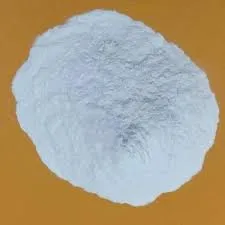
டிசம்பர் . 17, 2024 08:37 Back to list
mhec-methhyl hydroxyethyl cellulose manufacturer
Exploring MHEC The Versatile Methyl Hydroxyethyl Cellulose and Its Manufacturers
Methyl Hydroxyethyl Cellulose (MHEC) is a non-ionic, water-soluble polymer derived from cellulose, which has found numerous applications across various industries. This versatile compound serves as a thickening agent, binder, and film-forming agent, making it invaluable in construction, paints, food, pharmaceuticals, and cosmetics. As the demand for MHEC continues to rise, understanding the role of manufacturers in producing high-quality MHEC is essential.
What is MHEC?
MHEC is synthesized through the chemical modification of cellulose, a natural polymer derived from plant cell walls. By introducing methyl and hydroxyethyl groups into the cellulose structure, MHEC exhibits improved solubility, stability, and viscosity compared to its predecessors. Its ability to form stable gels and retain water makes it a popular choice for various applications, especially in construction-related products like tile adhesives, joint compounds, and plaster formulations.
Key Properties of MHEC
1. Thickening Agent MHEC provides excellent viscosity control in aqueous solutions, helping to achieve the desired consistency in products. 2. Water Retention Its high water-retention capacity is crucial in construction materials, ensuring that the products remain workable and maintain adhesion over time.
3. Film Formation MHEC can form a continuous film upon drying, which is essential for coatings and adhesives, providing a protective layer against moisture and environmental damage.
Applications of MHEC
mhec-methhyl hydroxyethyl cellulose manufacturer

1. Construction MHEC is extensively used in tile adhesives, grouts, and mortars to enhance workability, improve adhesion, and extend open time.
2. Paints and Coatings In the paint industry, MHEC helps in controlling the flow and leveling of the paint, ensuring a smooth finish.
3. Food Industry MHEC serves as a food additive to improve texture, stabilize emulsions, and enhance water retention in various food products.
4. Pharmaceuticals and Cosmetics It is used as a binder and film-forming agent in tablets, gels, and creams, providing consistency and stability to these formulations.
The Role of Manufacturers
The production of MHEC requires precise control over the synthesis process to ensure consistent quality and performance. Leading manufacturers utilize advanced technology and methodologies to produce MHEC with specific characteristics tailored to meet diverse market needs. Quality control processes are imperative as they ensure that the final product complies with industry standards and regulations.
Prominent MHEC manufacturers often invest in research and development to innovate and improve their offerings. They focus on sustainability, seeking eco-friendly and efficient production methods that minimize waste and energy consumption.
Conclusion
Methyl Hydroxyethyl Cellulose is a multifunctional compound that plays a significant role in modern manufacturing across a wide array of industries. Its unique properties make it indispensable, particularly in construction and formulations requiring stability and viscosity. As industries evolve, the demand for high-quality MHEC will continue to grow, underscoring the importance of reliable manufacturers in this sector. By understanding MHEC's benefits and applications, stakeholders can better appreciate the significance of this remarkable material in everyday products.
-
Versatile Hpmc Uses in Different Industries
NewsJun.19,2025
-
Redispersible Powder's Role in Enhancing Durability of Construction Products
NewsJun.19,2025
-
Hydroxyethyl Cellulose Applications Driving Green Industrial Processes
NewsJun.19,2025
-
Exploring Different Redispersible Polymer Powder
NewsJun.19,2025
-
Choosing the Right Mortar Bonding Agent
NewsJun.19,2025
-
Applications and Significance of China Hpmc in Modern Industries
NewsJun.19,2025







